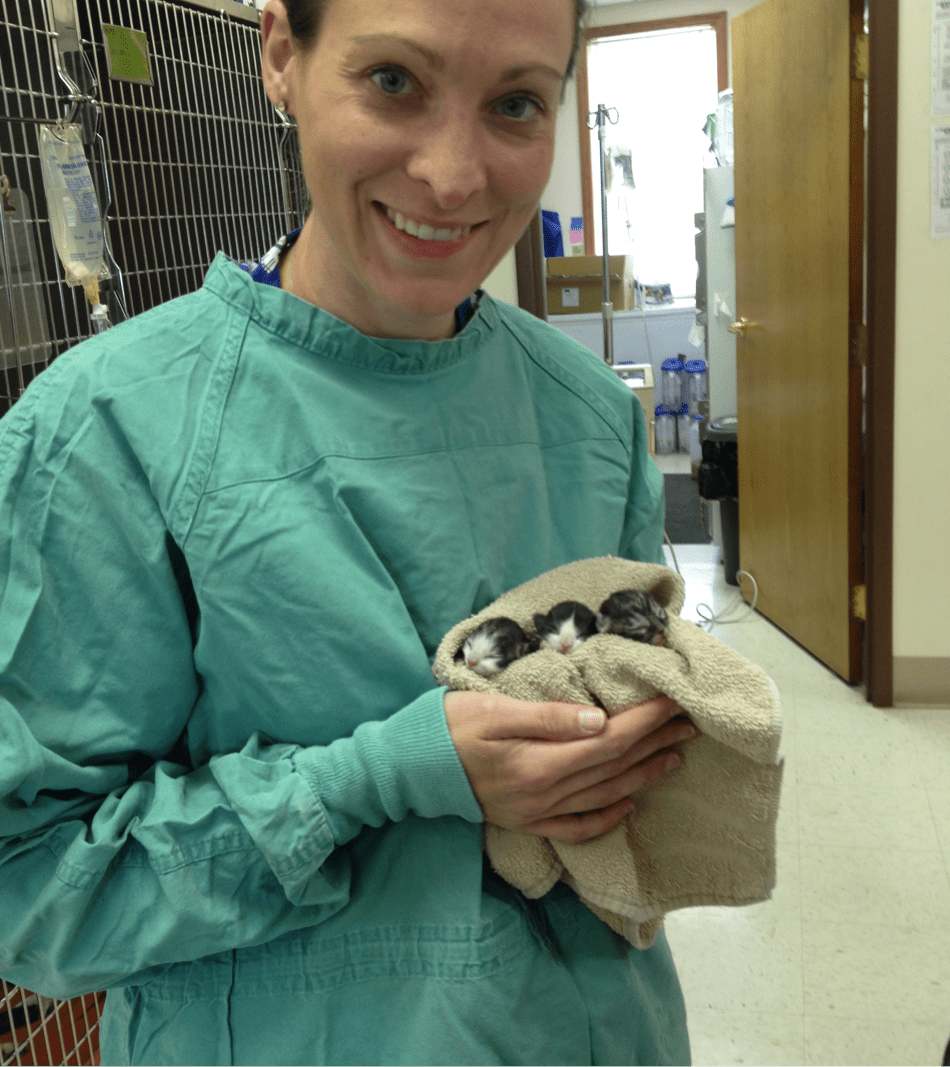Leptospirosis is a bacterial infection that can lead to serious illness in dogs. There are several strains of bacteria that can cause illness — we have a vaccine for the four most common strains. The bacteria is most common in warm and wet environments and heavy rainfall can make the spread of the bacteria worse. The most common way dogs get leptospirosis is through contaminated water- puddles, ponds, lakes. Another source of exposure is soil, bedding, or food that has contaminated with urine from infected animals.
Many different animals can spread leptospirosis through their urine (rodents, raccoons and live stock). The bacterial can enter the body by being ingested, through mucous membranes (eyes, nose or mouth) or through broken skin. The time it takes to develop signs of illness is about a week after exposure. This bacteria is termed zoonotic meaning that it can spread from animals to humans. Although this can happen most cases of human exposure is due to recreational activities involving water- infections in people as a result of contact with an infected animal is much less common, but it could happen.
Once the bacteria enters the body it affects organs, most commonly the liver and kidneys. Signs of illness can range from mild to severe, and sometimes be life threatening. The most common signs are fever, decreased appetite, vomiting, diarrhea, increased thirst and urination, lethargy, and soreness/ stiffness. Other signs including dehydration, yellowing of the eyes or gums, redness of the eyes or in severe cases bleeding into the lungs can occur.
Leptospirosis can be difficult to diagnose because the signs of illness can look like a lot of other disease. Initial test include lab work which can support and diagnosis followed by urine and PCR testing to look for the DNA of of organism and antibody testing. If you pet is having trouble breathing X-rays may also be recommended.
Treatment includes antibiotics and supportive care. Some pets that are more severely affected need hospitalization to help protect the gut and maintain blood pressure. Infection can be treated with antibiotics and complete recovery is possible. Some dogs have chronic liver and kidney disease as a results of the infection and dogs that have respiratory disease or bleeding are less likely to survive the infection.
Prevention is much simpler than treatment. Vaccinating dogs annually, limit access to standing water, preventing rodent problems, and avoiding contact with wildlife is the best way to prevent infection. After the first vaccine your dog will need a booster in 3-4 weeks, it becomes an annual vaccine after that. Historically this has been considered an optional vaccine but most veterinarians would consider this vaccine to be part of the core set of canine vaccines in the continental United States. Another myth is that only dogs in rural environments should be vaccinated- this is not true as rodent populations in city centers are very high and urban dogs are also exposed to the disease.
If you have questions about vaccinations schedule an appointment with your veterinarian.


 Barks & Recreation is proud to feature Dr. Eileen Savier CVA, CVCH as our Veterinary Blogger in our “From the Vet” Series — offering information related to the health and welfare of your furry family members! Currently part of the team of doctors at Keystone Veterinary Clinic, Dr. Savier is a 2012 Graduate of the Ross University School of Veterinary Medicine, She completed her clinical experience at The Ohio State University and after veterinary school she pursued further education and certification in Veterinary Acupuncture, Chinese Herbal Medicine, and Fear Free veterinary visits. Dr. Savier has a special interest in integrative medicine, animal behavior, and internal medicine and is committed to improving animal health care by integrating Eastern and Western philosophies. She enjoys working with fearful & aggressive dogs and cats and she has had additional training in low stress handling techniques and encourages positive reinforcement during exams and procedures. Her clinical interests include pain management, animal behavior, geriatric patient care, and internal medicine.
Barks & Recreation is proud to feature Dr. Eileen Savier CVA, CVCH as our Veterinary Blogger in our “From the Vet” Series — offering information related to the health and welfare of your furry family members! Currently part of the team of doctors at Keystone Veterinary Clinic, Dr. Savier is a 2012 Graduate of the Ross University School of Veterinary Medicine, She completed her clinical experience at The Ohio State University and after veterinary school she pursued further education and certification in Veterinary Acupuncture, Chinese Herbal Medicine, and Fear Free veterinary visits. Dr. Savier has a special interest in integrative medicine, animal behavior, and internal medicine and is committed to improving animal health care by integrating Eastern and Western philosophies. She enjoys working with fearful & aggressive dogs and cats and she has had additional training in low stress handling techniques and encourages positive reinforcement during exams and procedures. Her clinical interests include pain management, animal behavior, geriatric patient care, and internal medicine. Dr. Savier shares her home with two (soon to be three) dogs, two cats, and a toddler. She lovingly refers to her two dogs as Coconut Retrievers as they were rescue dogs she brought home from the island of St. Kitts. In her free time she enjoys spending time with her family, going to the beach, and planning her next Disney vacation.
Dr. Savier shares her home with two (soon to be three) dogs, two cats, and a toddler. She lovingly refers to her two dogs as Coconut Retrievers as they were rescue dogs she brought home from the island of St. Kitts. In her free time she enjoys spending time with her family, going to the beach, and planning her next Disney vacation.




